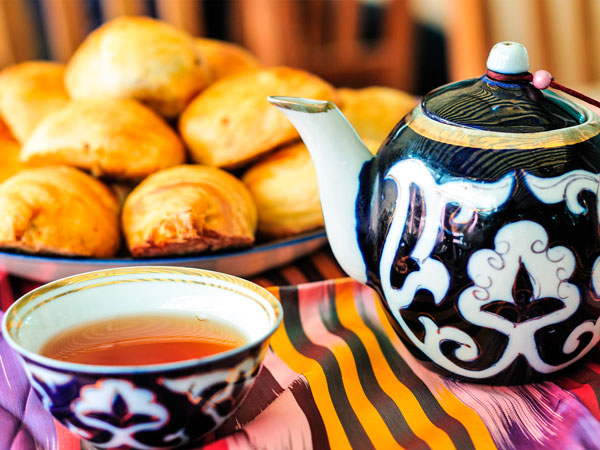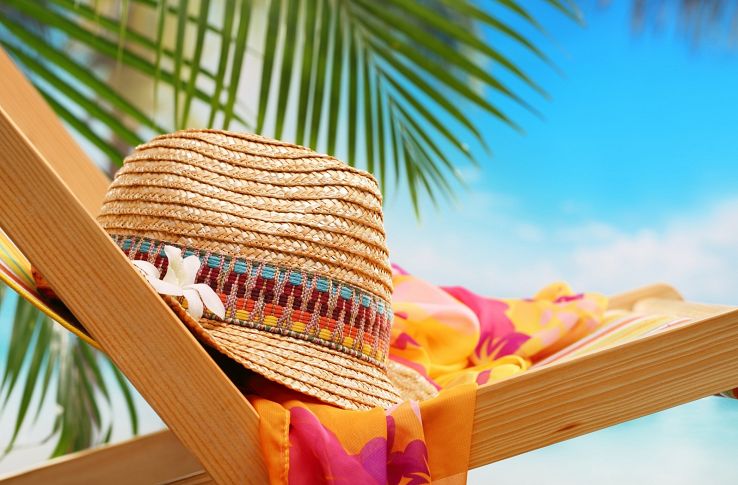
Uzbekistan tour
A trip to Uzbekistan is an opportunity to get acquainted with the history and cultural heritage of these places, to see Bukhara, Samarkand, Khiva with your own eyes.
Uzbekistan is a country of ancient culture and architecture. The architects of the East amazed travelers and merchants who followed the Great Silk Road with the splendor and beauty of their creations. Such cities as Samarkand, Bukhara, Khiva are rightly called the pearls of the east. There are more than four thousand historical monuments on the territory of the Republic.
Day 1. Friday. Moscow - Urgench - Khiva
Departure from Moscow by flight HY616 at 20:25
Day 2. Saturday. Khiva
Arrival in Urgench at 02:00.
Transfer to Khiva and hotel accommodation.
Breakfast.
Khiva is a unique city, rightfully claiming the title of the “seventh wonder of the world”, thanks to its authentic atmosphere of the “epoch of the beginning of time”. Most of the city of Khiva is like an open-air museum. And the core of this museum is the Ichan-Kala fortress. It is inside this fortress that all the architectural masterpieces of Khiva are concentrated. Everyone who gets inside the fortress finds themselves among amazing minarets, crooked alleys paved with stone, leading to a madrasah with a lace-like mosaic of rough ancient walls. A real oriental fairy tale! In 1990 the city was included in the UNESCO World Heritage List.
Excursion around Khiva: Madrassah of Muhammad Amin Khan (XIX century) - the largest medieval madrassah of Khiva; Kalta Minor (XIX century), Juma Mosque and Minaret (XII-XX centuries) - the roof of the Mosque is supported by 212 carved columns. Thanks to the unique building, this is the coolest place in Khiva, with excellent acoustics. The diameter of the Minaret of the Juma Mosque at the base is 6.2 m, the height is 32.5 m. Lunch at the restaurant.
Muhammad Rakhim Khan Madrasah (XIX century) is one of the largest in Khiva. It was built at the behest of Khan Muhammad Rahim II, also known as the poet Feruzshah. Citadel Kunya-Ark (XIX century). Mausoleum of Pakhlavon Mahmud (XVIII-XIX centuries), Minaret and Mosque of Khoja Islam (beginning of XX century)
Dinner at the restaurant.
Day 3. Sunday. Khiva - Bukhara
Breakfast.
Transfer to Bukhara through the Kyzylkum desert. Arrival in Bukhara in the afternoon.
Hotel accommodation.
Day 4. Monday. Bukhara
Bukhara is one of the oldest cities in Uzbekistan. Each street of Bukhara is fraught with ancient history, and the atmosphere of the ancient city, surrounded by majestic minarets and mosques, is amazing. Bukhara is an ancient city, analogues of which can hardly be found anywhere else. The beauty of Bukhara fascinates and remains for a long time in the hearts of people who have visited this city.
Excursion in Bukhara:
The Mausoleum of the Samanids (end of the 9th – beginning of the 10th century) is the pearl of the architecture of Central Asia, the family tomb of the Samanid dynasty.
Chashma Ayub Mausoleum (12th - 16th centuries), inside there is a source of healing water, named after the biblical prophet Job (Ayub).
Bolo-Khauz Mosque (18-20 centuries) - Friday mosque.
The Ark Fortress is a majestic citadel, the habitat of the rulers of Bukhara, a stronghold of power and might (1st century BC - 19th century).
Minaret Kalyan (1127) is a symbol of Bukhara, which for centuries served as a beacon for caravans in the desert approaching Bukhara. Another name for the minaret is “tower of death”, according to one of the legends, unfaithful wives and obstinate Bukharians were thrown from the minaret.
Lunch at one of the restaurants in the city.
(Optional) After lunch tea tasting at Silk Road Spices Tea House. The menu of this wonderful tea with various medicinal herbs, tea with saffron, ginger and other spices awaits you. As well as traditional oriental sweets such as halva, navat and kandalat.
Walk under trade domes (16th century): Toki Saraffon, Toki Telpak Furushon, Toki Zargaron, where craftsmen (jewelers, miniaturists and others) sell their products.
Ensemble Lyabi Hauz: Khonaka and madrasah Nodir Divan Begi (16th century), Madrasah Kukeldash (15th century), a monument to Khoja Nasreddin.
Dinner at the restaurant.
Day 5. Tuesday. Bukhara - Shakhrisabz - Samarkand
Breakfast. Departure to Shakhrisabz.
Shakhrisabz is the birthplace of Amir Temur. He was born in 1336, 12 km from the city, in the village of Khoja Ilgar. He spent his childhood and youth here. From the beginning of his reign, he sent many artisans, architects and all kinds of craftsmen to Shakhrisabz to build palaces, mosques and mausoleums for him here.
The road runs through the picturesque Takhtakaracha pass (1750 m above sea level - the highest point of the Samarkand region), a city tour: the portal of the Aksaray palace (XIV-XV centuries), the Jahongir mausoleum, (XIV-XV centuries) the Kok Gumbaz mosque (XVI century) .
Almost in the center of Shakhrisabz rises a group of ancient buildings. All of them represent the remains of the former ensemble of buildings, united once at the madrasah, called Dor-ut-Tilyavat ("House of reflection, contemplation"). This is also a Timurid memorial.
Its formation was associated with the personality of a prominent local Sufi Shamseddin Kulyal. Nickname Kulyal - "potter" - he received because he belonged to the craft environment, his father was a potter. Another nickname - Amiri-Kalyan ("Great Emir") - was associated with the high position that Shamseddin Kulal occupied in society, in particular, he entered Muslim hagiology as a "pir" (mentor) of the Bukhara sheikh Bekhauddin, the founder of one of the most popular, and over time, the most powerful dervis in Central Asia
shish orders - Naqshbendia. The mystical activity of Sheikh Kulyal proceeded mainly in Nesef-Karshi and Kesh-Shakhrisabz.
Lunch at the Takhtakaracha pass.
Tandoor kabob - a dish of nomads, warriors and travelers
Since ancient times, on the territory of Turkestan, a favorite dish of nomads, warriors and travelers was lamb meat cooked in a special way. The method dictated by field conditions is very simple. They dug a hole in the ground up to one meter deep and approximately the same diameter, laid firewood in it. Here, while the fuel was burning to coals, they cut a ram, butchered it into large pieces, sprinkled them with salt, put them on thick wooden skewers, which were then lowered into a hot pit, and poles were placed on top of it, covered with a felt mat, sprinkled with a thick layer of earth and waiting...
Speaking of tandyr-kabob, it should be said that the inhabitants of Mesopotamia, and especially the Shakhrisabz-Kitab oasis surrounded by mountains, located in the Kashkadarya region, treat its preparation with special trepidation and believe that they have brought their skills to perfection. They are confident that their lamb is much juicier and more tender than "dry", "overcooked" meat cooked outside of their region.
Departure to Samarkand.
(Optional) Filatov House-Museum. Winery them. Khovrenko.
In 1868, the Russian businessman D.M. Filatov organized the production of Uzbek wines, which gained great fame in the world wine market of that time. Later, Filatov's plant was headed by M.A. Khovrenko. Being very gifted, Khovrenko was able not only to save, but also to increase the achievements of his predecessor. At present, most of them are exhibits of the Filatov House-Museum, opened at the winery. Professor Khovrenko. The museum and the factory function to this day. The plant has its own tasting room, where tastings of wines produced here are held. Local wines have an exceptional tart taste and aroma.
Day 6. Wednesday. Samarkand
Samarkand is one of the oldest cities in Uzbekistan and in the world, in the middle of the first century BC. it was called Marakanda, and later Afrosiab. Samarkand was the capital of the state of Sogd, later became the center of the great empire created by Tamerlane. Numerous monuments of Samarkand and its environs make a great impression on visitors with their beauty and grandeur. The exquisite architectural forms, intricate patterns, mosaics, domes and blue tile facades fascinate all who see these magnificent structures.
- The mausoleum of Timur himself and his descendants - Gur-Emir. Only the central building has survived to this day. Inside the complex, Timur's black jade gravestone appears before you, but the real burial is in the basement of this complex.
- Square - Registan which is one of the most beautiful squares in the world, and includes the madrassas: "Sher Dor", "Tilla Kori" and "Ulugbek".
- Bibi-Khanym Mosque (XIV century) - built in honor of Timur's beloved wife, a project conceived by Timur as the largest mosque of that time.
– Siab Bazaar is a traditional “oriental” market in Samarkand, which has been in the same place for millennia. It has retained its unforgettable flavor and atmosphere, it surprises tourists with its colorfulness and variety of products and goods offered.
Lunch at the Pilaf Center
Everything is special in Samarkand – the air itself, water, people, history. How could it be that Samarkand does not have a unique cuisine? Could it happen that the ancient crossroads of trade routes, the meeting place of all the surrounding civilizations, would not become a haven for the most talented chefs? Could it happen that Samarkand did not give birth to something unique in culinary terms? It couldn't - it's completely understandable!
And will it be a revelation for you if we say that the main culinary heritage of Samarkand is Samarkand pilaf? Today you can try a real Uzbek pilaf from large cauldrons.
Continuation of the tour:
- Mausoleum of Shakhi Zinda (XI-XV centuries) - "City of the Dead". A complex consisting of more than 20 unique mausoleums of various construction times.
- Observatory of Ulugbek (XV century) - astronomer, scientist, ruler, beloved grandson of Tamerlane.
- Mausoleum of Saint Daniel. According to legend, Tamerlane, on his campaign to Asia Minor, made a pilgrimage to the mausoleum of the saint and decided that his capital, Samarkand, should also be rich and prosperous, and sent part of the saint’s remains with great honors to Samarkand.
- Visit to the Meros Paper Factory in the town of Konigil - not far from Samarkand, in the village of Konigil, there is a Meros paper factory. The founders of the factory, the Mukhtarov brothers, were able to restore the ancient manufacturing techniques of the famous Samarkand paper. At the factory, excursions are constantly held for everyone who wants to, which demonstrate the entire process of paper production. There is also a souvenir shop where you can buy the products of the factory.
Day 7. Thursday. Samarkand - Moscow
Airport transfer. Departure to Moscow by flight HY605 at 07:55




.jpg)